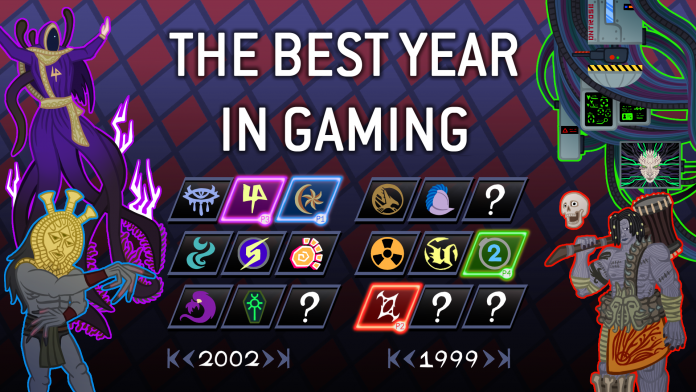Last year’s stacked lineup of games for the Game Awards had us thinking: What was the best year in gaming? As part of our series on determining gaming’s best year, we’re putting together an article on each year, charting the major releases and developments of the year, and talking about both their impact and what made them great.

The Year: 1993
1993 was an exciting year, and while it wasn’t technically the first year of the nineties, or even the second or third, I would argue in a sense it was the beginning of “The Nineties” as a defined era. The election of Bill Clinton, and his swearing into office marked a real change in US politics and set the stage for changes in “realpolitik” across the world, whereas George Bush seems a relic of the eighties. While the economy boomed in 1992, it was slightly less prosperous in 1993. The 486 PCs dominated the market in 1993 and computers were becoming increasingly widespread.
Other momentous events include the signing of the NAFTA treaty, siege of the Branch Davidian’s compound in Waco Texas, and a terrorist attack on the World Trade Center. A tumultous year. In media, 1993 saw the the release of the movie Groundhog Day, starring Bill Murray, and the the release of Jurassic Park, which at the time was the highest grossing film of all time at the time, and the X-files debuts on Fox.
1993 also saw the release of several iconic movies, in particular Jurassic Park, which transformed the use of CGI as well as practical effects, and has since spawned endless games and variations, references in gaming media properties.
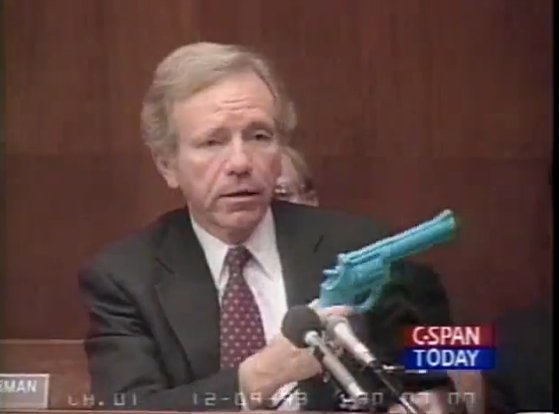
Violent Video Games Cause a Major Stir
Controversy around violent video games had been brewing for some time, with the release of the first Mortal Kombat, Doom, and Night Trap on the Sega CD causing enough of a stir that the US Senate Committees on Governmental Affairs and the Judiciary held congressional hearings on the issue, bringing in spokespeople from Sega and Nintendo to speak on the topic. The hearings were led by senators Joe Lieberman and Herb Kohl and basically called out video game companies for putting too much violent content in their games, citing gore in Mortal Kombat and Doom, suggestive scenes in Knight Trap, and light guns modeled after real-life guns, as well as how the industry was handling advertising and ratings (only Sega was publishing ratings, and was inconsistent about their display). In an all-time snake move, Nintendo’s Howard Lincoln threw Sega under the bus, blaming them for all of the bad content and claiming that Nintendo was solely in the business of making family entertainment (note: Mortal Kombat published to the SNES earlier that year, albeit without blood, and a blood-filled Mortal Kombat II would be ported to the SNES the following year).
The main result of the hearings was the formation of the Entertainment Software Rating Board (ESRB), which established a rating system for games to be prominently displayed on boxes. The ESRB ratings system continues to persist to this day and has been a pretty solid way for consumers to determine what kinds of content they’ll find in a game.
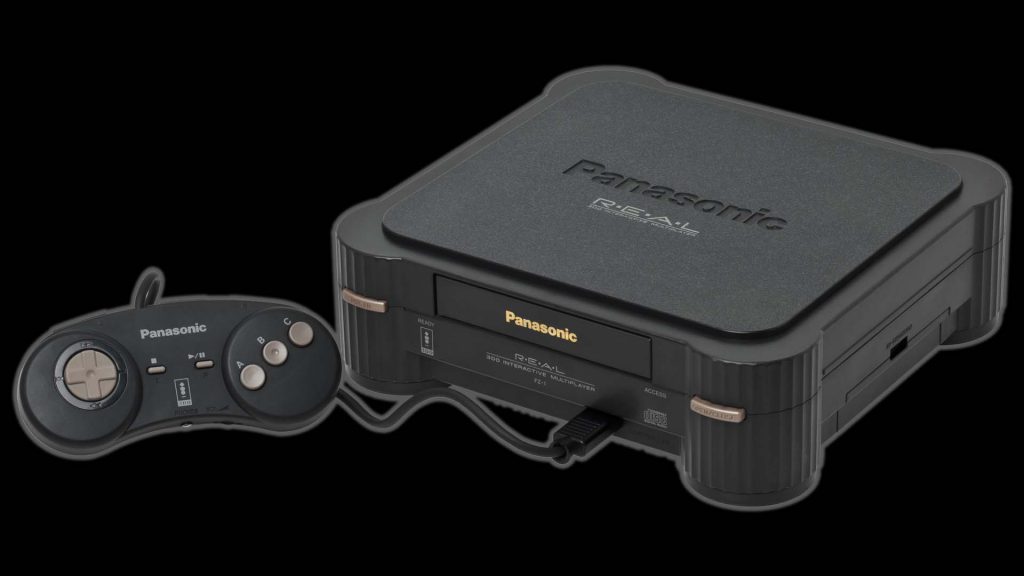
The 3DO Launches
In October 1993 The 3DO Company launched its video game console. Well, kind of. The 3DO wasn’t actually built by 3DO but was instead built by a number of other companies, though Panasonic produced the first ones. The 3DO is interesting for being a much more powerful console than anything on the market at the time, and for using a CD-ROM drive for graphics, but also for being largely terrible with bad games. Ostensibly the first fifth generation console, the 3DO couldn’t render polygons and so games on the console were basically 2D games using more detailed and colorful sprites. The 3DO was more a novelty than serious console, though it did see some good ports – Myst chief among them – and one or two decent exclusives, like Killing Time.

Star Fox
The original Star Fox was released this year, and you’re hearing it in your head before I even say it right? Do a barrel roll. That line came from this game’s more enduring and popular sequel (the one that didn’t get cancelled, fun story there), but this is where it all started: Anthropomorphized animals piloting arwings to battle a vague enemy, a great arcade style rail shooter which spawned a franchise which persists to this day. Star Fox was notable for being the first game to use the Super FX chip, an add-on chip to SNES cartridges which added 3D graphics to the SNES, though it could also handle 2D graphic scaling (an effect which would see use in Yoshi’s Island).

Doom
Doom. Sorry I meant DOOM! Grab a shotgun and shoot demons in the face. If that isn’t enough firepower for you, then grab the BFG-9000. Doom really set the tone for ultra-violent, gory first person shooters. Though a clear follow-up effort to id Software’s earlier Wolfenstein 3D, Doom offered so many substantial improvements that it really stands alone, from what kind of levels the engine could handle to the first multiplayer support in an FPS title in history. Doom is probably the most important first person shooter ever made, and many interesting iterations in the genre draw obvious inspiration from it. Doom received almost universally positive reviews, though a 7/10 from Edge Magazine has been repeatedly mocked, often called one of the worst reviews of all time, because of the line, “If only you could talk to those creatures, then perhaps you could try to make friends with them, form alliances… Now, that would be interesting” (Edge Magazine, 1993).
Doom was ultimately so popular that it caused problems beyond the halls of the Senate; campuses and businesses had to crack down on gaming at work and school due to people playing multiplayer (which at the time could require monopolizing a number of phone lines intended for other purposes). It also spawned a long-running franchise that’s reinvented itself multiple times, and even a movie with Dwayne “The Rock” Johnson, the first big budget film to feature “first person shooter” mode.
Jonathan Bernhardt: In retrospect, maybe not the big deal that inventing multiplayer for shooters was. But I think it was the first time we ever heard the Rock say “fuck” in a movie, so we’ll always have that.
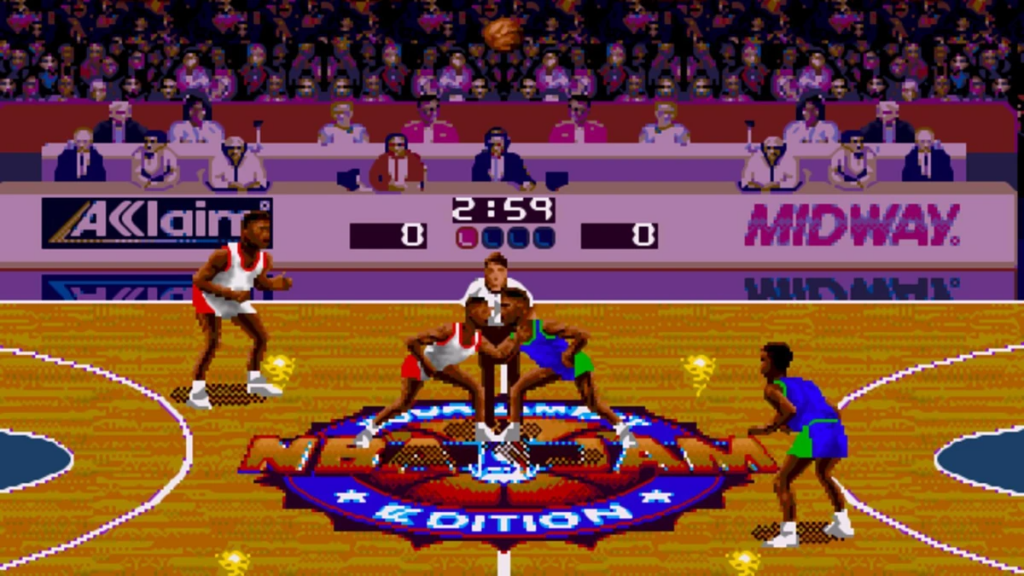
NBA Jam
Midway’s over-the-top arcade basketball game was first released in 1993, leading a dynasty of NBA games lasting for about 20 years. The game featured two-on-two action with NBA players (though Jordan was notably absent), with a focus on fun action over hyperrealism. That means sports stars making impossible dunks, jumping multiple times their own height, and wacky graphics and sound effects. Many of the innovations in NBA Jam later appeared in other sports games.

Mega Man X
TheChirurgeon: Released in December 1993 in Japan, Capcom’s Mega Man X brought the franchise into the 16-bit era, updating it and giving us a new story. No longer focusing on the blue bomber vs. Dr. Wily, Mega Man X picked up a hundred years later, following the adventures of Dr. Light’s final creation, a fully autonomous reploid named X tasked with the Blade Runner-esque job of retiring reploids who have chosen to rebel against humans. Mega Man X is one of the finest 2D side-scrolling action games ever made, with wonderful level and boss design, tight platforming and controls, and a host of cool secret upgrades with more story than a Mega Man game had seen before.

FIFA International Soccer
EA’s answer to Madden for the rest of the world, FIFA international Soccer released in 1993 for the Sega Genesis (and the following year for other consoles) setting the stage for another annual franchise. While soccer’s not huge in the United States, the FIFA series has massive following in the rest of the world, and the 93 original sold extremely well in Europe. The game would go on to be a Genesis/Mega Drive exclusive in ‘94.

Myst
One of the most important games of all time, Myst was a strange puzzle game with an intricate, hinted-at backstory. A contest, or rivalry, between two brothers places the player in the middle, given the opportunity to choose which of the two to aid while they explore a silent, mysterious world filled with puzzles. Myst featured a non-linear story and the sort of mysterious, not in your face, storytelling that caused people to be intrigued in finding out what was going on. Ultimately it was the best selling video game of all time for a long time throughout the 90’s. It inspired multiple novels and spin off games, and is cited as being a partial inspiration for the TV show Lost a decade later.
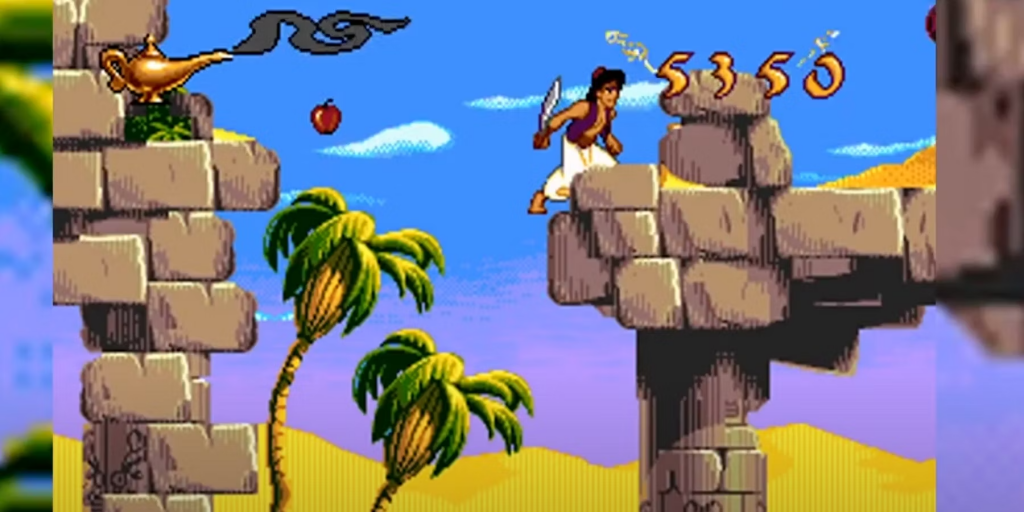
Aladdin
This one’s a bigger deal than it seems at first blush. Disney’s animated Aladdin in 1992 was a massive hit, fueling the ongoing Disney Renaissance which had begun with The Little Mermaid in 1989. Shortly after the game released, both Sega and Capcom acquired a license to create the game based on the movie. This was only even an option because of Nintendo’s licensing policies at the time, which prevented developers from releasing the same game for both consoles. Sega would end up working with Disney and Virgin Games on their version of the game, which featured digitized hand-drawn animation to create stunning visuals similar to the animated feature. The result was a game that looked fantastic, and while I think it’s a weaker game than the Capcom version on the SNES, it’s much stronger visually and outsold its SNES counterpart. Nintendo weren’t happy about being beat by Sega on graphics and losing this particular bout would fuel their interest in working with Rare to develop Donkey Kong Country.

Mortal Kombat II
One of the most anticipated video game releases of all time, Mortal Kombat II released to arcades in 1993. With Super Street Fighter II, the games played a major role in the rejuvenation of the American arcade market, and Mortal Kombat sold extremely well, moving nearly 25,000 cabinets by the end of of 1996 (Replay Games). MKII featured more characters, better graphics, more stages, tighter gameplay, more finishing moves – adding Friendships and Babalities – and more secrets to discover. As successful as the game was, its sequel was an even bigger deal, particularly when it came to consoles a year later. The game was such a big deal that Nintendo both allowed the game to be published on the Genesis at the same time and also allowed it to ported to the SNES with all the blood and gore intact to avoid a repeat of disappointment players had with the original.

Mage: the Ascension
One of the most interesting Role Playing games ever, Mage: the Ascension offered much better definition to what was sort of going on in the Old World of Darkness. The various World of Darkness properties deliberately contradicted each other, and Mage was an opportunity play a reality bender who faced a slowly losing battle against an ascendant force that was slowly snuffing magic out of the world. In many ways Mage: the Ascension is a roleplaying game version of the Matrix, with only player characters able to see the world for what it really is, and many humans going about in a fog of disbelief that aids their enslavement by the Technocracy.
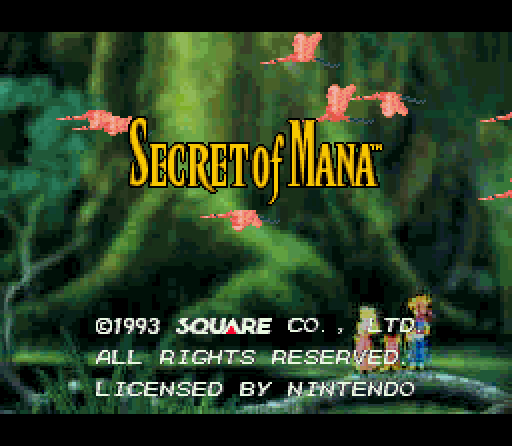
Secret of Mana
Called Seiken Densetsu 2 in Japan and the sequel to Final Fantasy Adventure, Squaresoft’s Secret of Mana released in late 1993 in Japan and the United States. It’s an action RPG which features 3-player cooperative multiplayer, one of the few SNES games to support the multi-tap adapter. The game features amazing graphics and music and despite relatively low hype in the US went on to become a top-seller. It’s a phenomenal game and its success in the US would eventually spawn a US developed spin-off called Secret of Evermore, another underappreciated gem. For US audiences, Evermore would end up being the replacement for Seiken Densetsu 3, leading to the series ending up in a kind of limbo. Which is a shame, because the series had the potential to rival Final Fantasy and Dragon Quest.
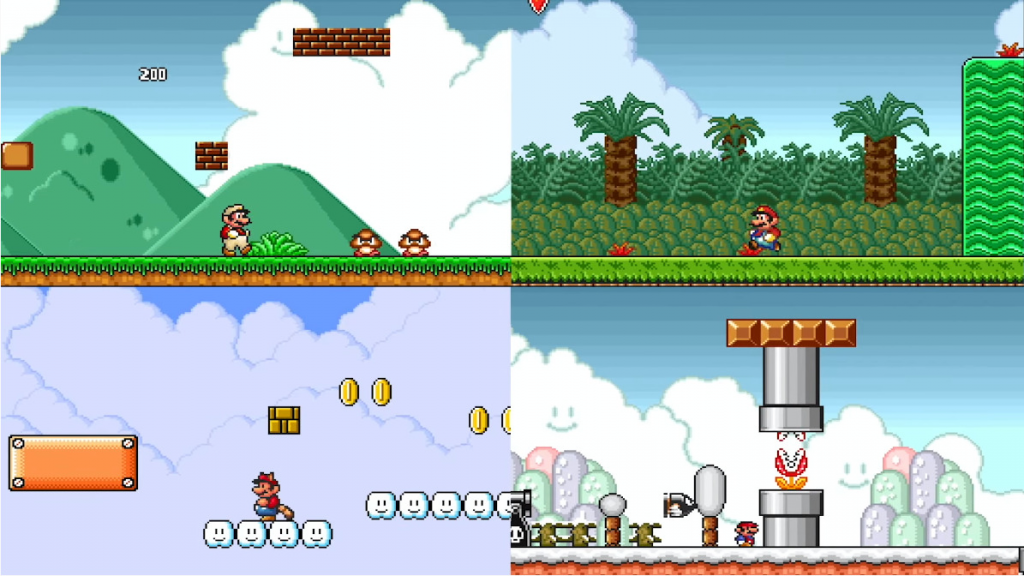
Super Mario All-Stars
Though not the first remake in video game history, 1993’s Super Mario All-Stars may be the first really high-profile remake. SMAS is notable for both bringing the first three mario adventures into the 16-bit era with a graphics overhaul but also for bringing the Japanese version of Super Mario Bros. 2 to the US for the first time as The Lost Levels. The game would later see an updated 1994 release which included Super Mario World as well.

Warhammer 40,000 Second Edition
Games Workshop released the second edition of its tabletop wargame in 1993, fundamentally shifting it from a more role-playing-like experience with a GM to a true tabletop wargame. Gone were the percentile tables, unit progression, and rogue trader-led forces; instead 40k’s second edition pit army against army with a mix of Imperial, Chaos, and Xenos forces. Models were organized into squads and armies would attempt to achieve missions on the battlefield, often asymmetrically. Along with the game’s release, the first Codex – Space Wolves, would release shortly afterward, in early 1994, establishing the game’s new model of core rules + a rulebook for each army. While second edition 40k is very different from the modern game, it’s still recognizably 40k in a way that Rogue Trader is not.
Warhammer 40k’s second edition would last from 1993 to 1998, when third edition would dramatically streamline the game. In addition to creating the codex model, second edition would add a major expansion with psychic powers – 1994’s Dark Millennium – completely overhaul Chaos and Tyranid forces, and add two new armies – the Adepta Sororitas and Necrons – while removing the Squats from the game.
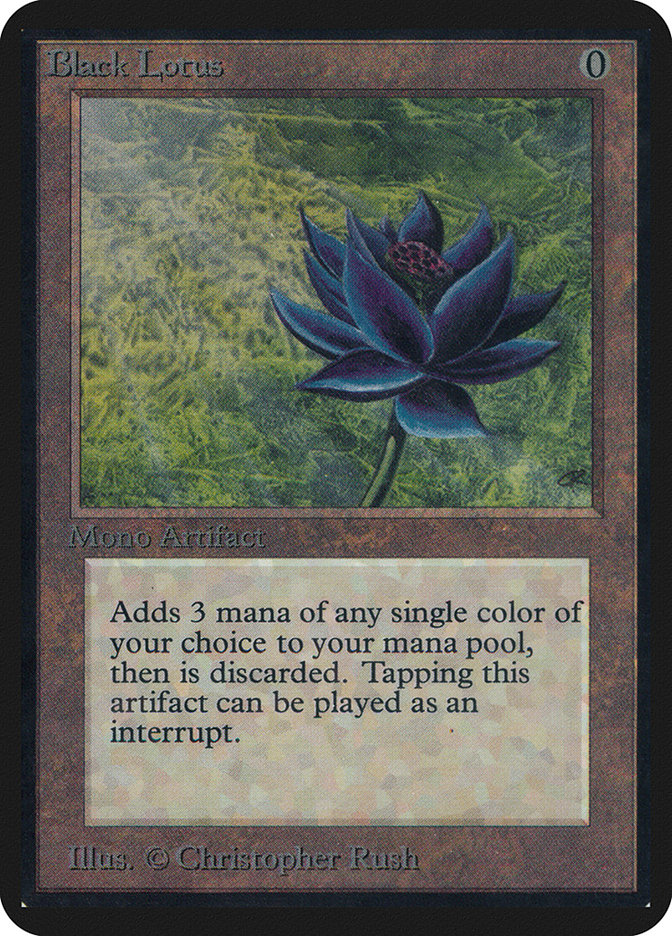
Magic: The Gathering
The origins of Magic are born in Dungeons & Dragons, a desire for more complexity, and a partnership between Peter Adkison and Richard Garfield.
Adkison was fascinated with Dungeons & Dragons after it released, particularly with how anything a player or dungeon master came up with could become part of the game. “[He] soon became obsessed with this even deeper form of gameplay and the community it spawned. Not just D&D but eventually Rolemaster, DragonQuest, and the many other pen-and-paper RPGs that flooded the market in the late ’70s and early ’80s.” (Davis, Seattle Met).
Richard Garfield was a game designer, and came to Adkison and Wizards with Roborally, a game featuring races between robots in a destructive robo derby where players lock in their moves before all players moves are revealed, and players watch helplessly as their best laid plans are disrupted by their opponents and they are crushed, sawn, fall into pits, shot with lasers, etc. Adkinson wasn’t interested in Roborally at the time, however, asking for something simpler and with less setup.
In order to design something fast-paced with minimal equipment, Garfield looked to card games. Roleplaying games and board games require set up, sometimes taking hours, game pieces and boards, flat places to play. While having a table is convenient, I’ve played games on my lap before, on a plane, waiting at a doctors office on top of magazine. Part of the simplicity is that all you need is the cards and that’s a big part of what makes the game successful and easy to play anywhere – and you can fit a deck of magic cards in your pocket (or you could at one point, before triple sleeving and treasure tokens and commanders in hard cases). Nonetheless, Magic’s bare minimum requirements make it far easier in terms of playing with someone you’ve run into, and taking the game with you.
Garfield had designed multiple card games at that point, and for this project he combined them into a game which was just called Magic in testing. Wizards briefly looked at naming the game “Mana Clash” in order to be able to trademark the name before settling on Magic: the Gathering as the game’s official name. Before it was even published, Magic ran into problems at its big release event at GenCon 1993; their product got separated during shipping, and only about ten percent of it arrived in time for the show. Because of this, Wizards of the Coast decided to limit purchases even while they were promoting. Still, with the cards being designed to be played easily anywhere, Wizards sent out employees to simply play the game in open play areas. The result was that traffic slowly increased as the day went on, having a bit of a viral effect as people bought cards, played a little, and then attract the attention of others.
Right away the game was striking in its popularity. The game went so viral at GenCon that it distorted everything and caused lines for other games to distort and to start affecting the entire hall. “The line for our booth stretched all the way down the aisle, so people waiting to buy Magic cards would have a chance to check out their stuff. As for the booths to the left of us and across from us I think they were less pleased, as the moment people had their Magic cards they would run off and thus not check out those booth’s stuff. The length of line in our section started to attract attention as people wanted to know what was going on and what all the fuss was about.” (Fanboy News Network)
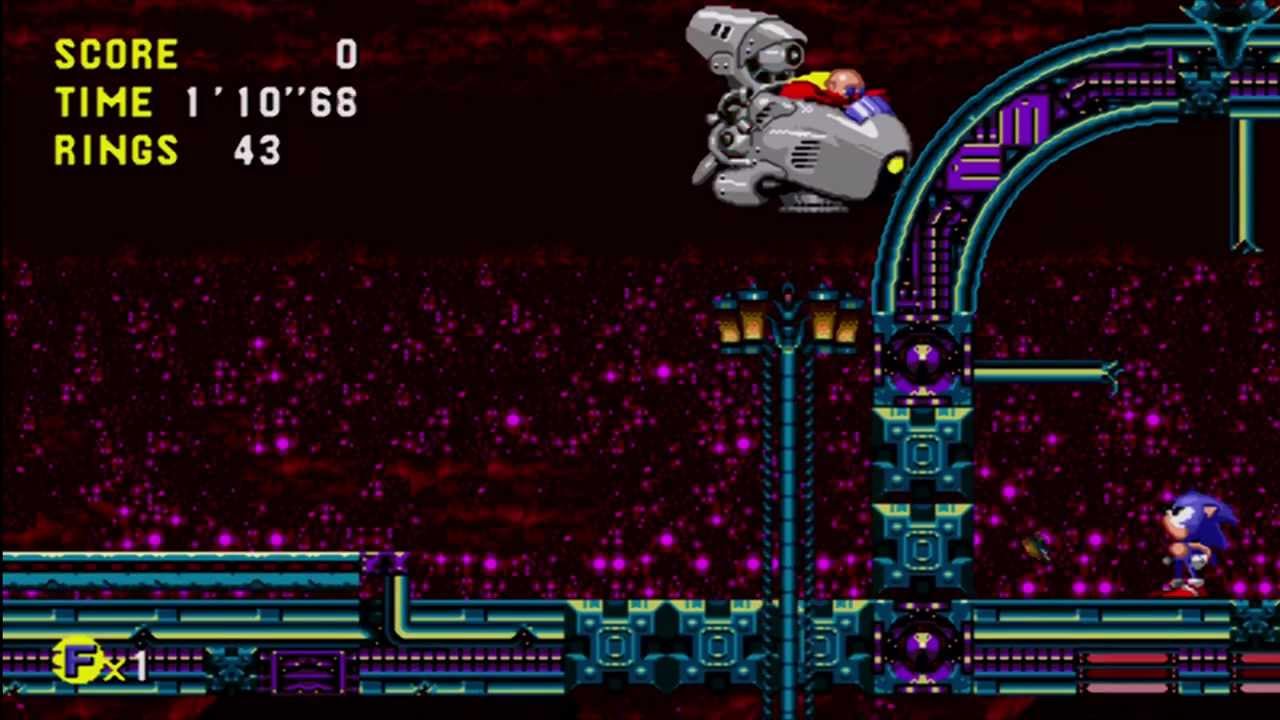
Other Great Video Games
TheChirurgeon: As a major year in the 16-bit console wars, there were a ton of other great hits in 1993 when it came to video games – too many to list in their entirety, but we’ve got a few additional notes on some of our favorites.
- The Legend of Zelda: Link’s Awakening. One of the Gameboy’s best games was this first outing brinking Link’s adventures to a handheld. The game packs an astonishing amount of content into a tiny package, and introduces a button-swapping mechanic for items which would become a staple in later releases.
- Sonic CD. In development at the same time as Sonic the Hedgehog 2, this sequel shows off a kind of alternative history for the Sonic franchise, where levels are a little slower and more puzzle-based. It’s a solid entry in the series with an absolute banger soundtrack – both the JP and US versions.
- The 7th Guest. Although eclipsed by Myst that same year, Virgin Interactive’s horror puzzle game had players navigating a haunted mansion filled with puzzles and FMV cutscenes, attempting to solve a series of murders.
- ActRaiser 2. Quintet followed up their cult classic with a sequel in 1993, dropping the Civ-like building elements in favor of making a pure action platformer. The result was a very tight game and one of the most difficult (but rewarding) games ever made.
- Romancing SaGa 2. A big series in Japan but little-known in the US, Squaresoft’s Romancing SaGa series was better known in the west as Final Fantasy Legend for the Gameboy. The SNES games were known for their nonlinear gameplay and having unique storylines for their rosters of selectable cahracters.
Why It Was the Best Year in Gaming
1993 saw a number of important video game releases which set the tone for the future of fighting games, shooting games, and especially collectible card games. Technologies pioneered in 1993, motion capture, and greenscreens, have gone on to drive how video games and movies are made for decades. But Magic created an entire industry, collectible card games, living card games, even modern deckbuliding games owe their existence to
Magic has had an unbelievable impact on gaming, and has been so profitable that Wizards has bought out other major franchises. Collectible Card games are essentially a gate way drug into roleplaying and tabletop miniatures games, affordable (well sort of) for teenages with a deck or two, and able to play at school on lunch with only 1 other person, they, and magic in particular with it’s staying power, has redefined the gaming landscape. While many other interesting collectible card games have arisen in the last 31 years, Magic has essentially defined the genre, and outlasted virtually every other competitor.
Without Magic: The Gathering there would likely be no Pokemon card game, Yugioh, Lorcana, or any other physical trading card game. The genre was invented by Wizards, and the company grew so much, and was so profitable it bought out TSR among other properties, conglomerating into a games powerhouse before eventually selling to Hasbro. The capitalization of Magic’s profit rescued a defunct and near bankrupt Dungeons and Dragons, allowing for the creation of 3rd edition and Dungons and Dragons as a larger franchise, as well as attendant properties, and even a decent blockbuster Dungeons and Dragons movie in 2023, a solid 30 years later.
Additional Sources
Davis, Darren,. Seattle Met December 18, 2017 “Spell Casters, a ‘Magic: the Gathering’ Origin Story https://www.seattlemet.com/arts-and-culture/2017/12/spell-casters-a-magic-the-gathering-origin-story
https://www.replaygames.us/25th-anniversary-mortal-kombat-ii-by-midway/
https://www.fanboynewsnetwork.com/gencon-93/
This article is part of a larger series on the best year in gaming. For more years, click this link. Have any questions or feedback? Drop us a note in the comments below or email us at contact@goonhammer.com.
